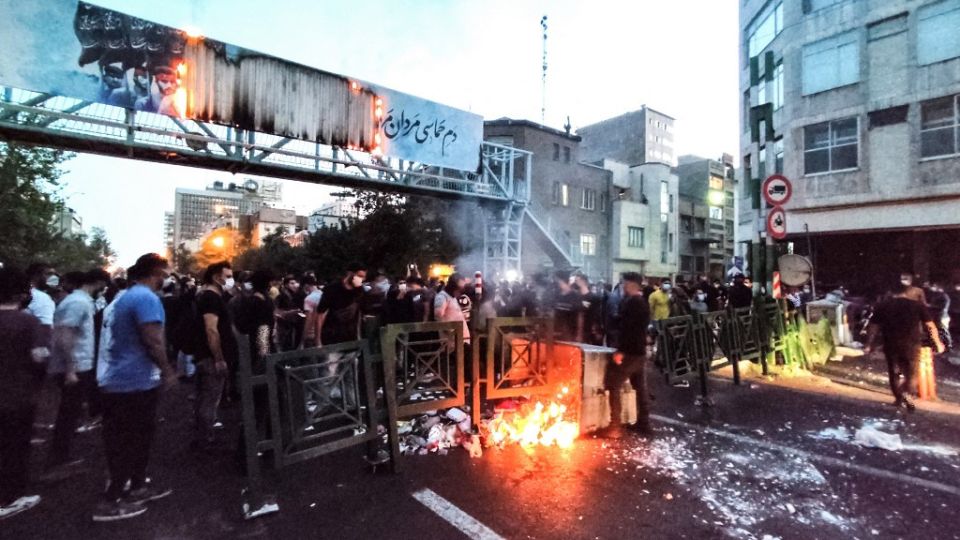November 1, 2022
JAKARTA – Experts, activists and researchers have warned that the persisting trend of wardrobe policing and mandatory hijab rules in Indonesia is “dangerous” and potentially deadly as protests over Mahsa Amini’s death spread over the weekend in universities across Iran.
They are calling for the continued preservation of democracy and feminist movements as a means to strengthen women’s rights and safety upon reflecting on the death of Amini, a 22-year-old woman who died shortly after being captured by the Iranian moral police for “improper” wearing of the hijab.
Amini’s death has triggered one of Iran’s largest protests in at least 13 years, with thousands rallying in defiance of the Tehran government. With police cracking down on protests, hundreds have died over the past weeks.
That the case of religious wardrobe policing could turn bloody and possibly threaten a regime should be noted by Indonesia, experts said in a webinar on Thursday. They argued that many parallels can be drawn between the incident in Iran and the increasingly repressive social trend — one of discrimination against unveiled women and girls — in Indonesia.
“Though the [Amini’s] case did not happen in Indonesia, we do not live in an isolated world. Everything is interconnected, especially considering that both countries are Muslim-majority,” said feminist writer Julia Suryakusuma.
Neng Dara Afifah, a lecturer at the Nahdlatul Ulama University and self-proclaimed “Muslim feminist”, explained that Indonesian college students started to wear the hijab in larger volumes starting in the ‘90s due to excitement over a new Islamic intellectual movement brewed by the 1979 revolution in Iran.
But, decades later, the intellectual element of hijab-wearing has seemingly worn off, said Neng Dara, as state or institutional mandates started using the religious veil as a tool of uniformity instead of the women’s personal choice.
It is only through a robust democracy and an active feminist movement that Indonesian women can defend themselves against this repressive trend, the scholar suggested.
“Democracy comes at high cost. In Indonesia, where we have successfully passed the Sexual Violence Law, there are reasons to celebrate. […] But above all, what is most important here is the struggle of our women’s movements,” she said.
While democracy can ebb and flow, it is the women’s movements and organizations that provide a sense of relief and security, she said. In Special Region of Aceh for example, where laws are used to justify wardrobe policing mostly targeted at women, a growing feminist movement has presented a safe space to air out frustrations and advance empowerment, Neng Dara added.
Mechanisms like the National Commission on Violence Against Women (Komnas Perempuan) cannot be taken for granted, the scholar asserted, noting that such democratic mechanisms may be precisely the elements needed to prevent Indonesia from spiraling into an Iran-esque state of affairs.
School of thought
Maziyar Parvizi, an exiled Persian rights activist living in Indonesia, echoed Neng Dara’s statement, saying that “while [Amini’s case] may happen anywhere, Iran is at a disadvantage for not having any tools for civilian protection”. The core of the problem begins at school in the case of Tehran, Parvizi said, where a thick undertone of patriarchal ideas is perpetrated on children as young as 5 years old.
“Students are taught that men are the head of the family, and that women must obey these masculine figures. […] There is no separation between religion and the state anymore. I am sorry to say that I see some similarities here in Indonesia,” said Parvizi.
A 2021 research from the HRW noted that in the 24 Muslim-majority provinces of Indonesia, “a majority” of the 300,000 state schools have mandated their Muslim schoolgirls to don the religious headscarf.
Data from the National Commission Against Violence to Women (Komnas Perempuan) noted 32 districts and provinces with the same rule applied to civil institutions and public places.
Even in instances where these rules are not applied through legal means, the de-facto pressure faced by the women is harsh enough to cause fatalities, said HRW researcher Andreas Harsono.
“We have observed bullying cases against women and girls without the hijab in public spaces. […] The pressure caused by forced mandates has caused several mental illness cases and suicide attempts,” he said.
In schools, punitive hijab mandates have also been recorded, such as cases of schoolgirls getting their uniforms vandalized with markers or having their hair forcibly cut as a punishment for not “dressing accordingly”, Andreas said. He added that these rules have also been observed to extend to non-Muslim students as well.
If there is anything that another Muslim-majority country can learn from Iran’s case, it should be that apathy toward the face of repression will only result in violence and the death of many, Parvizi warned.
“Nonchalance should not be the response here. I would like to urge all Indonesians to pay close attention,” he asserted.


